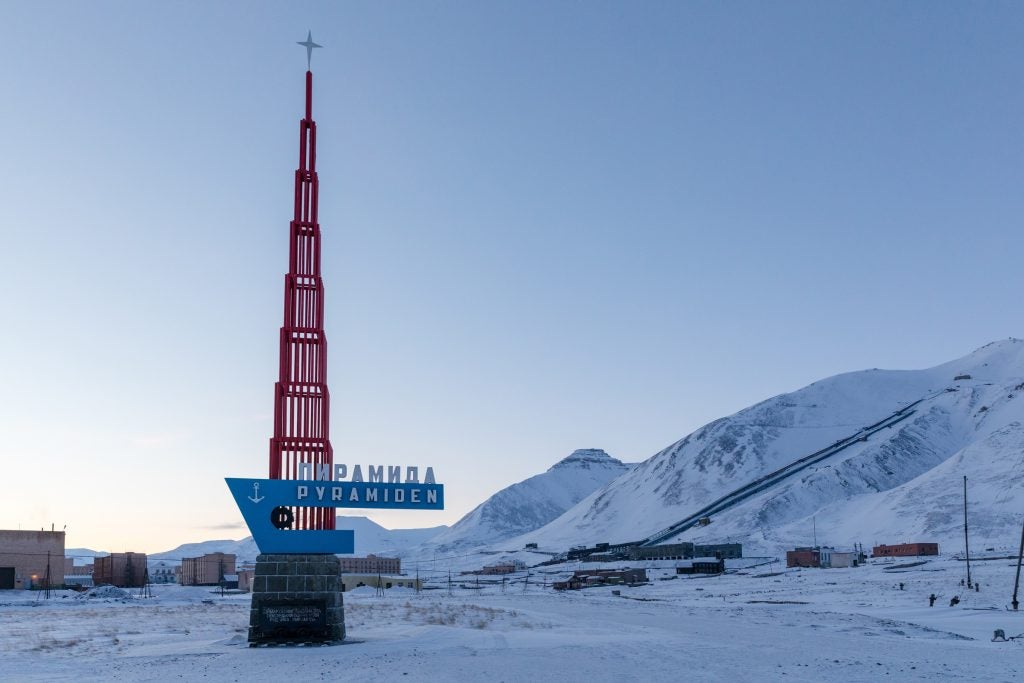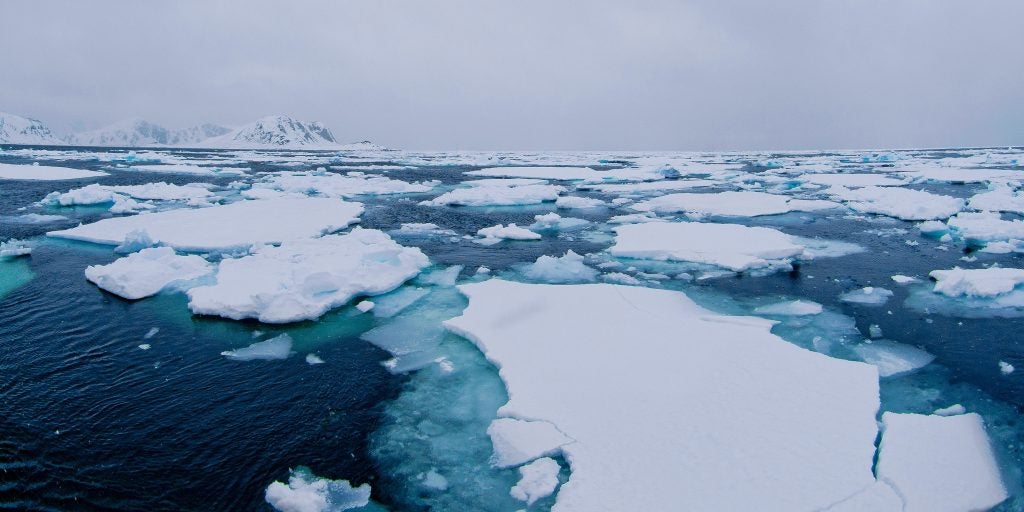Svalbard and the geopolitics of Arctic mining
<!–
–>
Svalbard is a Norwegian archipelago situated about 1,000km south of the North Pole, an isolated part of the world, but one with considerable mineral wealth. The islands are rich in mineral deposits, including copper, zinc, gold and silver and the islands are home to research projects, including China’s Yellow River Station. Despite the lack of an indigenous population, the islands remain one of the northernmost inhabited areas in the world.
The 1920 Svalbard Treaty gave Norway sovereignty over the archipelago, also known as Spitsbergen, but with certain stipulations, most notably the dematerialisation of the islands, which mainly impacted local coal production.
All signatories of the treaty could engage in this mining but since 2012 Russia and Norway have been the only nations with a presence on Svalbard. Despite diminishing coal reserves, both nations seek to keep a foothold in the archipelago thus maintaining their political presence in the Arctic.
According to Dr Elizabeth Buchanan, head of navy research at the Sea Power Centre in Australia, “world wars, cold wars, have come and gone, and Svalbard has remained a zone of peace, research, and economic exploitation. Geostrategically, Svalbard is significant. But geopolitically it is increasingly gaining significance too, particularly given the Ukraine-Russia War.”
The geopolitics of the Arctic
Throughout its history as a colonising power Russia has had a committed interest in the Arctic. Vast swathes of Arctic territory fall under Moscow’s control, stretching over 53% of the coastline of the Arctic Circle. Russian citizens account for nearly half of the Arctic population worldwide.
As global temperatures continue to rise Arctic ice is melting and the resources hidden beneath are becoming increasingly accessible.
Since the Russian government theatrically planted a flag two and a half miles below the North Pole in 2007, making a symbolic claim to the territory, numerous nations have shown an interest in potential Arctic resources. The Arctic however, doesn’t just offer a solution for Russia’s fossil fuel habit, it is also a political stage, and Svalbard is no exception.
Pyramiden, a coal mining town in Svalbard is home to the most northern statue of Lenin in the world. During the Soviet era the town was developed to house workers for the state-run coal mine. As one of the only outposts beyond the iron curtain, Pyramiden became somewhat of a Soviet utopia, an example perfect communism, intended for the eyes of outsiders.

In fact, the coal mining which took place beneath the permafrost produced only one thousandth of the coal which was produced in the Kuzbass region in southwestern Siberia. In terms of resource acquisition, Svalbard was not economically viable in the long-term for Russia, but the Kremlin’s goal was not coal.
Buildings in Svalbard. Photo by Dmitry Chulov via Shutterstock
Workers were housed in flats meant to look like those on the Russian mainland. The town was home to schools, kindergartens, a greenhouse to grow fresh vegetables and even a swimming pool and gym. Standard of living in Pyramiden was generally much higher than on the Russian mainland.
Following the collapse of the iron curtain many of Pyramiden’s inhabitants left, but Russia has kept a presence there. The Svalbard Committee, set up in 2019 by some of Putin’s closes aides shows a continued interest in the archipelago.
As mining on Svalbard negotiates depleting resources, industrial activities, such as the collection of water and sediment samples, legitimise Russia’s presence in Svalbard and subsequently the arctic.
As Buchanan says, “today, much of the Russian interest sits around national pride, exploratory history, the heroic age of the Soviet Union, and enduring national belief in a legitimate stake in Svalbard”.
Legitimate interest in Svalbard
Svalbard continues to house two functioning coal mines. Mine No.7 is the only remaining Norwegian-owned mine in the archipelago. The mine was due to close in two years’ time as the nation moved away from fossil fuels, but this has been extended to 2025 to cope with the energy crisis partially caused by Russia’s invasion of Ukraine.
The other operating mine is Russian-owned and located close to the town of Barentsburg, the only remaining Russian settlement on Svalbard. Despite dwindling reserves Russia seeks to maintain its Svalbard presence through other legitimising methods.

Some argue that benign activities such as scientific research and economic activity are in fact merely an excuse to maintain their presence, considering the small mineral reserves, should it be required for geopolitical or even military reasons in the future.
Last month the Norwegian Intelligence Service warned of Russia’s nuclear “deterrent” in the waters of the far north. According to the report: “Moscow views Western military activity in the [Arctic] as a threat to Russian interests, and believes that other states are using measures to combat climate change as a pretext for preventing Russian activity”.
Seven nations have territories which sit within the Arctic Circle: the US, Canada, Russia and the Scandinavian countries of Sweden, Norway, Iceland and Denmark via its territory of Greenland. The Arctic Council, an intergovernmental forum hosting representatives from these nations, suspended activities following Russia’s invasion of Ukraine in February 2022, suggesting that the era of Arctic collaboration is over.
Following the invasion of Ukraine natural resources have become objects of political interest as sanctions and scarcity have affected energy supplies. Maintaining a presence in the arctic is of economic interest to the Russian government as they seek to access resources.
Buchanan says that: “as per Russian bastion strategy, a naval strategy which essentially divides the sea into zones of ‘sea control’ and ‘sea denial’, Svalbard is critical. Its proximity to the Kola Peninsula, and the Northern Fleet basing for Russia’s naval and nuclear assets means should the archipelago fall into enemy or competitor hands control wise, Moscow’s bastion strategy is threatened”.
China eyes Arctic mining
In its Arctic Policy white paper published in 2018 the Chinese government set out plans to establish itself as influential in determining Arctic policy. China defines itself as a ‘near-Arctic state’, largely by using a map created by geophysicist Hao Xiaoguang which is orientated vertically to imply China’s proximity to the arctic circle.
This effort by the Chinese government to legitimise their presence helps to continue their dominance in the acquisition of critical minerals.
The US government has expressed previous concerns over China’s interest in Arctic mining. US Department of State spokesperson Morgan Ortagus says: “The People’s Republic of China’s increasingly aggressive and malign behaviour around the world is a strong indicator of how it will behave in the Arctic […] The US increasingly sees threats and aggressive actions from Beijing when countries do not toe Beijing’s line”.
The US has rejected China’s claim to be a near-Arctic state, stating that there is no such thing. The US government is willing for China to maintain a presence in the Arctic so long as it is benign and free from military pressures and territorial disputes.
In January of last year, a telecommunications cable was damaged off the coast of Svalbard which connected the archipelago to mainland Europe. The only vessel which could be found for miles was a Russian fishing trawler, raising suspicions. While Norwegian police determined that something “man-made” had damaged the cable the investigation was inconclusive, it could not be proven that the fishing vessel was responsible, but tensions have remained high.
The Arctic presents a unique coming together of nation states, and their individual interests. Any attempt to reduce Russia’s role in the Arctic would be deemed, by Moscow, evidence of Western double standards. Svalbard has played host to contemporary geopolitics throughout its history. As we move into a new era of international relations, Svalbard’s ice continues to reflect these dynamics.
“In many ways”, says Dr Buchanan, “Svalbard is a ‘frozen’ geopolitical issue, increasingly under strain as climate warms and strategic tensions rise”.
Source: News
